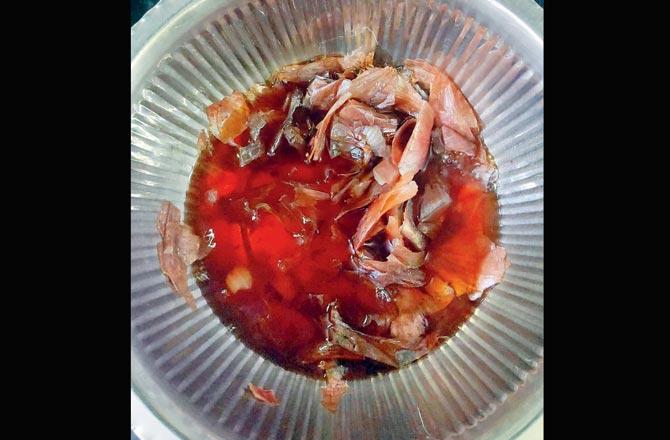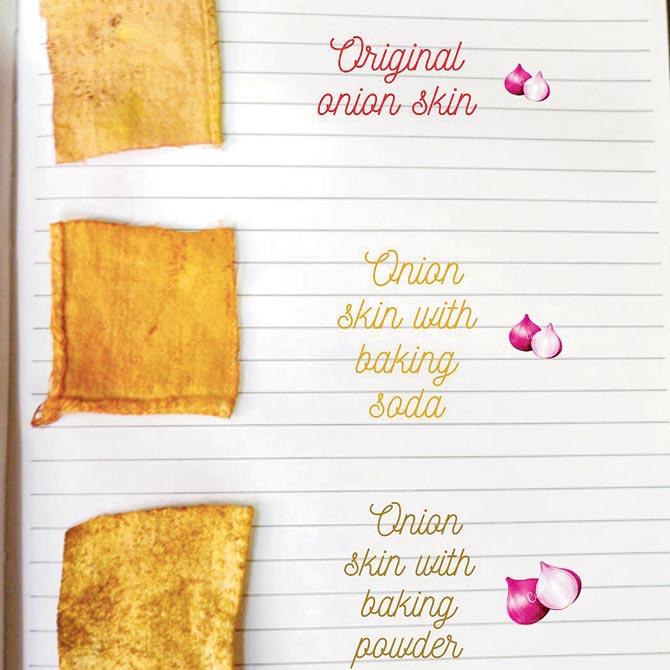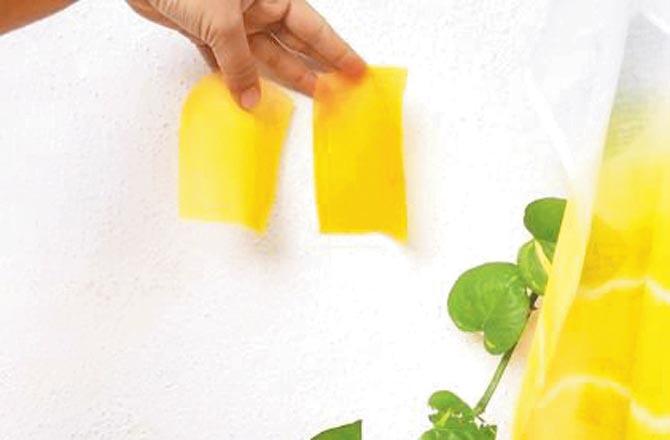A boutique owner tells you how to add colour to your life

Two hues of red that Rathod made using beetroot skin
Although I'm an artistic person, when the lockdown started, I realised I had run out of art supplies. I wanted to make a card and had no colours at home," says Kandivali-based software engineer Purvi Rathod, who also runs a home boutique called Thumri. While she had learnt the art of dyeing in Kutch before starting her business, she knew the process was difficult to replicate at home. As stepping out was not an option, Rathod turned to her kitchen and garden for inspiration. "I spoke to my Kutch-based artisans who told me I could use kitchen waste and alkaline substances at home to create basic colours. So, out came the leaves, onion peels, hibiscus and tea bags," adds the 32-year-old who has been sharing her colour experiments on Instagram.
ADVERTISEMENT
If you have been wondering what to do with that faded old scarf, or want to paint but don't have colours, Rathod has some tips for you.

Create a palette
Peach: Peel the skin of a couple of onions and wash off the impurities. Take a stainless steel vessel and submerge the onion skins in water. Boil this for five to 10 minutes, and you'll find the water turning peach. Once you get the desired colour, strain the liquid. You can experiment with baking powder, baking soda, lime and vinegar to alter the shades. For instance, if you add baking soda to the dye, it takes on a tangerine hue, while adding baking powder gives it a greenish tinge.
Blue: Contrary to its name, the pink cabbage produces blue colour. Chop the cabbage and boil it in water for 20 to 30 minutes. The longer you boil, the darker the shade turns. You can add some baking soda to get a teal shade. Yellow: Pomegranate might leave your hands pink, but the shell that you discard gives off a yellow hue. Chop the non-edible part into one-inch pieces and boil it in water for 20 to 30 minutes. You can add turmeric for a sunshine yellow shade.

In one of her posts, Rathod demonstrated how boiling onion skin and adding different alkaline substances produces various shades of peach
Brown: Look no further than your morning cuppa for this hue. You can use tea bags or coffee granules to create different shades of brown. Make sure you strain the colour before you use it. Playing around with quantity, boiling time and alkaline substances can give you different shades for
all colours.
Paint or dye
After your colour is ready, dip your brush into the liquid and get started on a painting. You can add some corn starch to the dye to thicken the colour. You can also use hibiscus, marigolds or other flowers in your garden as crayons by pressing them on paper.

Purvi Rathod
If you want to dye a fabric, start small by testing the colour on a small patch of cloth that is organic; cotton, silk and wool absorb hues the best. If you want the colour to last long, pre-soak the fabric in alum for an hour or two before soaking it in the dye for an hour. Dry the fabric, but avoid direct sunlight.
Log on to @thumri_thestore on Instagram
Also check out

Fabric dyed with turmeric. Pic/Organic Symmetry Instagram
. Bengaluru-based Anisha Khiyani has started a natural-dyeing-at-home series on @organic_symmetry on Instagram.
. Designer Manjushree Saikia from Assam has shared a dye-with-tea video on her label's Facebook page @uramaku.
Catch up on all the latest Mumbai news, crime news, current affairs, and a complete guide from food to things to do and events across Mumbai. Also download the new mid-day Android and iOS apps to get latest updates.
Mid-Day is now on Telegram. Click here to join our channel (@middayinfomedialtd) and stay updated with the latest news
 Subscribe today by clicking the link and stay updated with the latest news!" Click here!
Subscribe today by clicking the link and stay updated with the latest news!" Click here!






